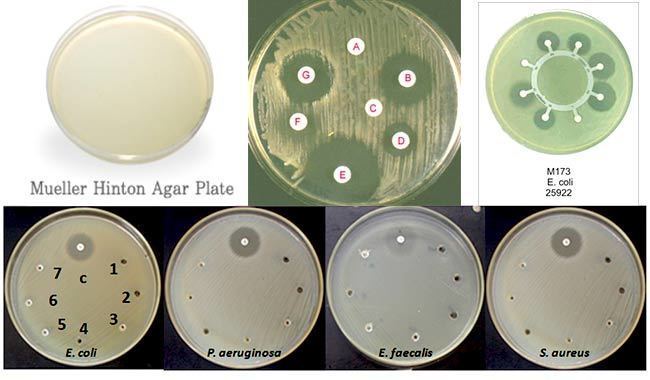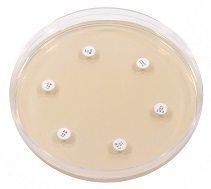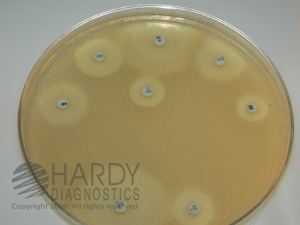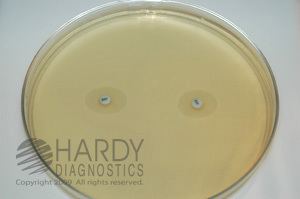 | ||
Müller-Hinton agar is a microbiological growth medium that is commonly used for antibiotic susceptibility testing. It is also used to isolate and maintain Neisseria and Moraxella species.

It typically contains:

Five percent sheep blood and nicotinamide adenine dinucleotide may also be added when susceptibility testing is done on Streptococcus species. This type is also commonly used for susceptibility testing of Campylobacter.

It has a few properties that make it excellent for antibiotic use. First of all, it is a non-selective, non-differential medium. This means that almost all organisms plated on here will grow. Additionally, it contains starch. Starch is known to absorb toxins released from bacteria, so that they cannot interfere with the antibiotics. Second, it is a loose agar. This allows for better diffusion of the antibiotics than most other plates. A better diffusion leads to a truer zone of inhibition.

Mueller-Hinton agar was co-developed by John Howard Mueller and Jane Hinton at Harvard as a culture for gonococcus and meningococcus, who published the method in 1941.
